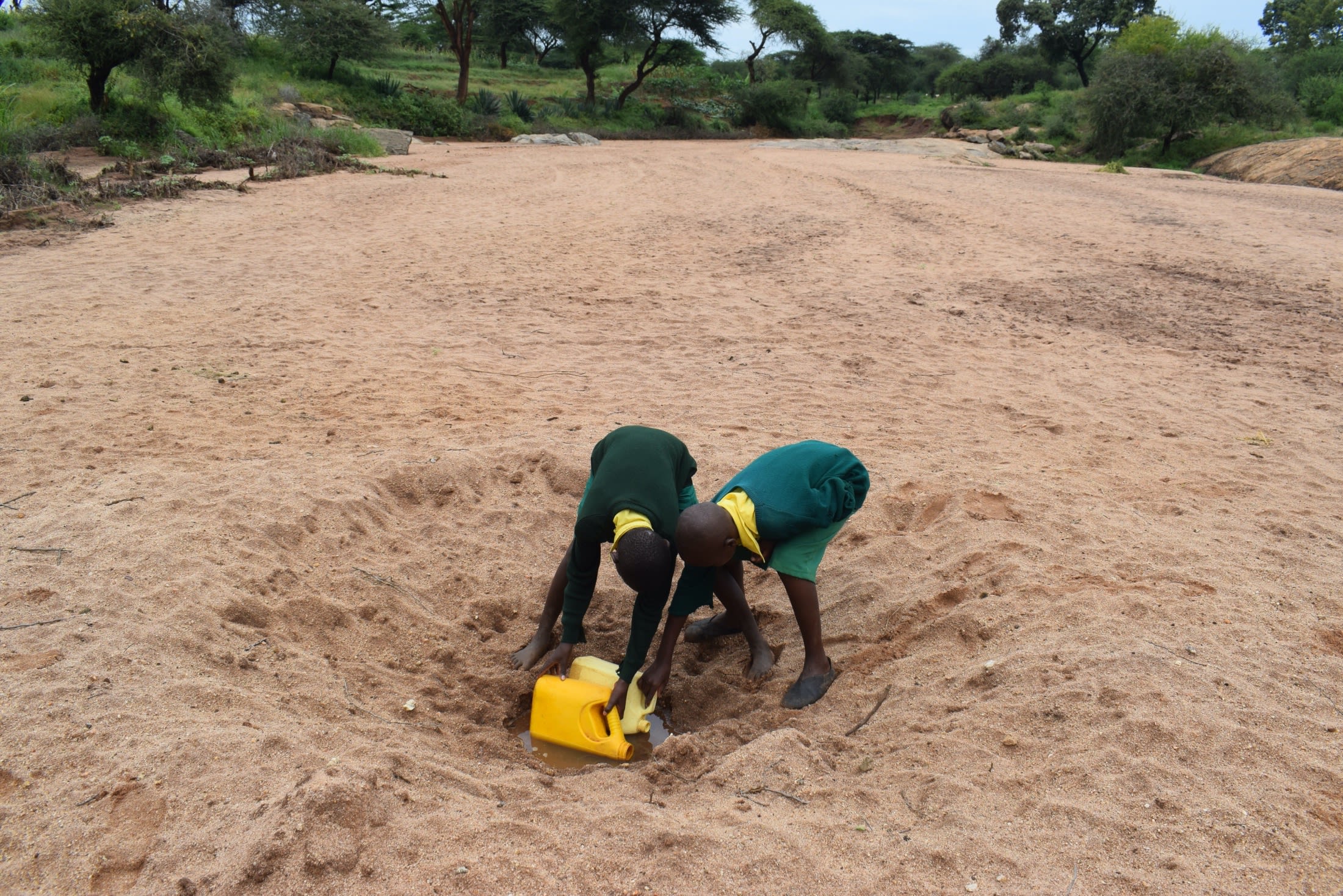The 149 students and staff at Makutano Secondary School struggle to access sufficient water daily. And sadly, the water they can obtain makes people sick from water-related illnesses costing them valuable time and resources.
"The region faces erratic short rains and long-drought periods that have culminated into various water scarcity issues. For instance, agricultural programs in the school have stalled because the pupils have little water to drink, let alone irrigating various crops or vegetables. The school's facilities (classes and latrines) are rarely cleaned because water is inadequate. The school also has two rainwater tanks with a total capacity of 18,000 liters; thus, they cannot harvest enough water to sustain the school during the long drought period," shared our field officer Alex Koech.

Since the small rain tanks that feed a tap stand on the school campus run dry quickly, the school employs a water vendor to collect water and deliver it by donkey to the school, but this process only creates more problems.

"The water vendor carries water to school using a donkey; thus, she can only avail not more than 80 liters per trip which is not enough. The water is also acquired from unknown sources, usually scoop holes (a representative scoop hole is shown below), which exposes the students to water-related maladies like amoeba, typhoid, and dysentery," said Alex.

"Purchasing water costs the school about Ksh60,000 (over $400) annually, draining the financial resources. The water is also not treated.[The] water vendor acquires it from unknown [sources], which exposes students to infections such as typhoid, amoeba, and diarrhea. The available water is salty and insufficient, making it unreliable because it is inappropriate for cooking or drinking. [Students] are usually sent home to seek medication leading to time wastage and subsequently dismal academic performance," continued Alex.
"There is no drinking water in the school, and we have to purchase it, which strains the little finances in the school. The drained finances make it difficult to run school activities like the school feeding program and building more learning structures," said 43-year-old teacher Jacob Kalemi.

"When there is no drinking water in the school, we have to bear with the thirst until we go back home. Sometimes meals are delayed, like yesterday, because we do not have water," said 16-year-old student Peninah M.

"We wash our classes once per week, which is not sufficient to create a conducive learning environment. The inadequate water negatively affects [the] irrigation of agriculture projects leading to dismal performance in the subject," concluded Peninah.
"The installation of the proposed 104000-liter rainwater tank will ensure students have a steady supply of clean water during the rampant drought, thus, preventing exposure to water-related infections and water scarcity. The tank will also be set up within the school compound, enabling students to focus their energy and time on improving their academic studies, including agriculture. It will also offer enough water to conduct proper hygiene and sanitation, allowing students to learn in a conducive environment. The school will save on water expenses and utilize it for other important activities like improving the school's infrastructure or building more learning structures," concluded Alex.
The installation of the much larger rain tank and guttering system will hopefully solve the current water crisis at this school so everyone has sufficient water to drink and there is plenty of water to meet the school's other needs.
Water at schools is unique, which is why we need unique solutions.
The Proposed Solution, Determined Together...
At The Water Project, everyone has a part in conversations and solutions. We operate in transparency, believing it benefits everyone. We expect reliability from one another as well as our water solutions. Everyone involved makes this possible through hard work and dedication.
In a joint discovery process, community members determine their most advantageous water solution alongside our technical experts. Read more specifics about this solution on the What We're Building tab of this project page. Then, community members lend their support by collecting needed construction materials (sometimes for months ahead of time!), providing labor alongside our artisans, sheltering and feeding the builders, and supplying additional resources.
Water Access for Everyone
This water project is one piece in a large puzzle. In Kenya, Sierra Leone, and Uganda, we're working toward complete coverage of reliable, maintained water sources that guarantee public access now and in the future within a 30-minute round trip for each community, household, school, and health center. One day, we hope to report that this has been achieved!
Training on Health, Hygiene & More
With the community's input, we've identified topics where training will increase positive health outcomes at personal, household, and community levels. We'll coordinate with them to find the best training date. Some examples of what we train communities on are:
- Improved hygiene, health, and sanitation habits
- Safe water handling, storage & treatment
- Disease prevention and proper handwashing
- Income-generation
- Community leadership, governance, & election of a water committee
- Operation and maintenance of the water point
Handwashing Stations
Alongside each water source in Southeast Kenya schools, we also provide three new handwashing stations fitted with three taps each, allowing nine students to wash their hands at once. These will allow everyone at the school to wash their hands without running water. Handwashing is so important to help prevent future water-related illnesses in the school community.
The student health club will maintain the stations, fill them with water, and supply them with soap (which we will teach the school community how to make during the training!).



 Rehabilitation Project
Rehabilitation Project














